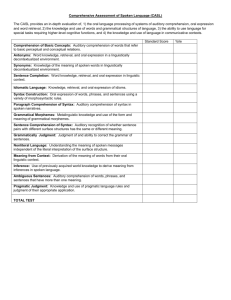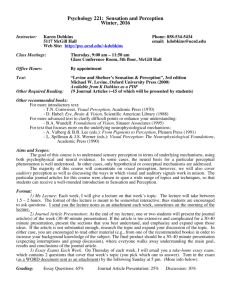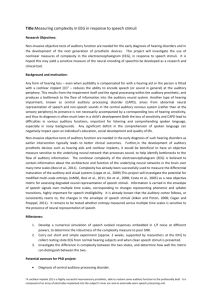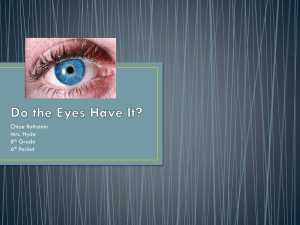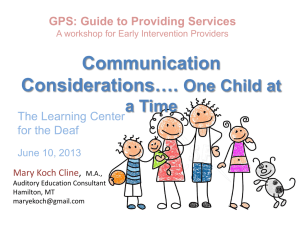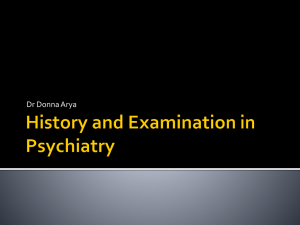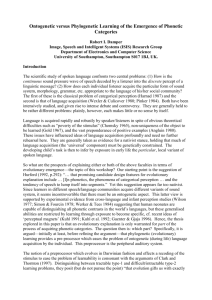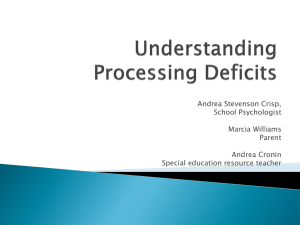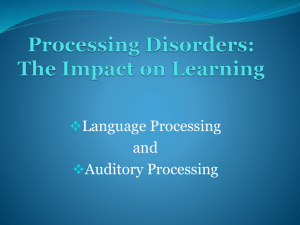ppt
advertisement
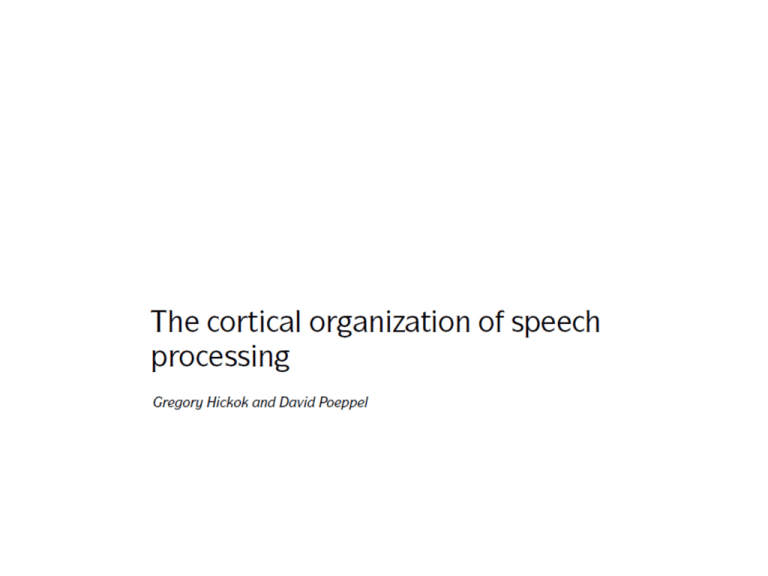
Background • Neural organization of speech perception difficult to characterize • 1st hypothesis: based on auditory cortex (auditory language comprehension disorders, left STG lesions) • Challenged by 2 discoveries – Deficits in speech sound perception contribute minimally to auditory comprehension in Wernicke’s aphasia – Destruction of left STG leads to deficits in speech production (not auditory comprehension) • Deficits in syllable discrimination from frontoparietal damage • Syllable discrimination and word comprehension doubly dissociated (can have one without the other) Paradox and Article Goal • First imaging studies: – Passive listening highlights ST regions bilaterally – Syllable discrimination activates left STG and left IF lobe • Paradox remains • Damage to left regions causes mainly deficits in speech production (not auditory comprehension issues) • In this article we will: – Describe and extend a dual-stream model of speech processing that resolves paradox – Outline central components – Discuss model assumptions and relevant evidence Task Dependence and Definitions • Neural organization of speech processing is task dependent => must define task of interest • Speech perception and speech recognition doubly dissociate (can have one without the other) • Speech processing = any task involving aurally presented speech • Speech perception = sublexical tasks (e.g. syllable discrimination) • Speech recognition = mapping of acoustic signals to mental lexicon • Not necessarily a single route to recognition • Perception tasks involve executive control and working memory Dual-stream model Ventral stream: sound to meaning • • • • • [Dorsal stream: sound to action] Parallel computations and bilateral organization Multi-time resolution processing STS crucial to phonological-level processing Lexical, semantic and grammatical linkages Parallel routes Lexical phonological networks in STS Dorsal stream: sound to action • • • • Less agreement on role of auditory dorsal stream Spatial hearing, “where” function Interface with motor system Need for auditory-motor integration – – – – Learning to speak is a motor task Neural mechanism for mapping sounds to speech gestures Generation of sensory representation of new words Continues to function in adults • Evidence for a sensorimotor dorsal stream – Left lesions (conduction aphasia: phonemic errors but comprehends) – Functional imaging (next figure) Auditory-motor task for speech Summary and future perspectives • Acoustic speech network must interface with – Conceptual systems – Motor-articulatory systems • Above basic concept accounts for an array of fundamental observations • It also fits with similar proposals in the visual and somatosensory domains • Might be a reflection of a more general principle of sensory systems organization • Future work – Specify within-stream details – Empirical work to test hypotheses – How neural models map to linguistic and psycholiguistic models Operculum

